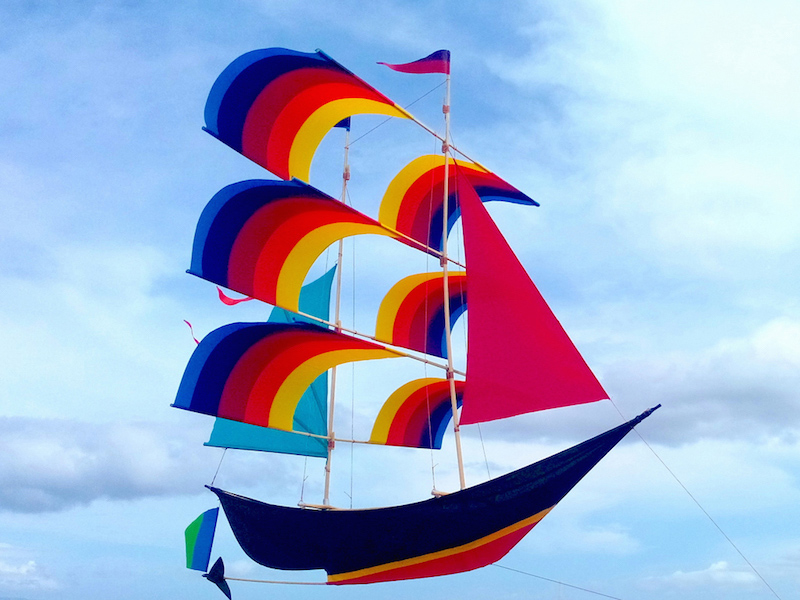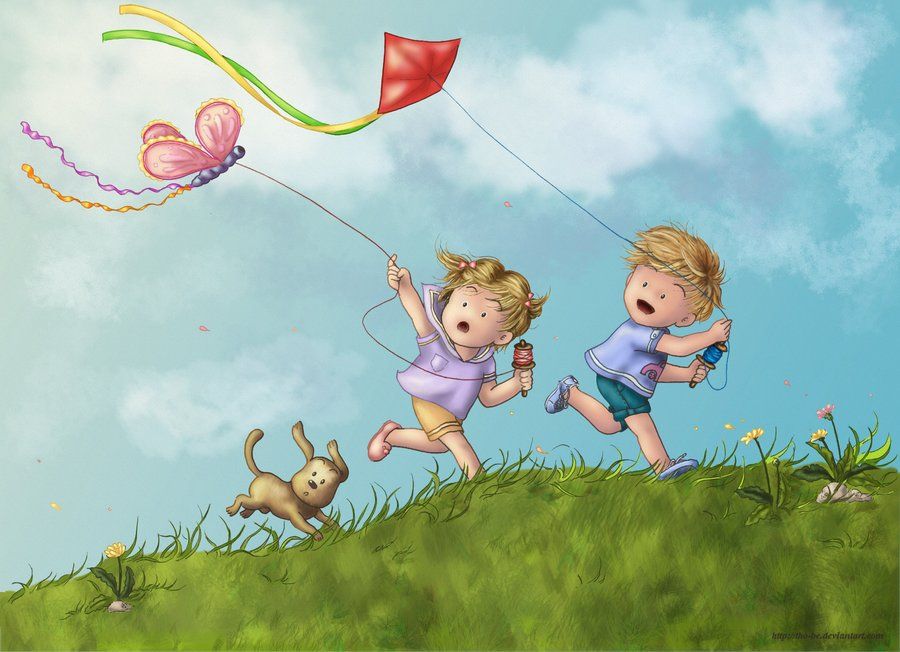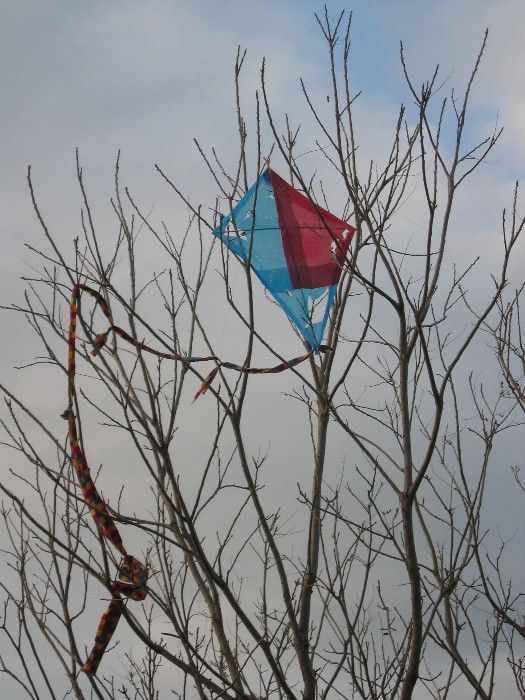THE KITE for Class 6 ENGLISH
THEME
The poem explains the flying of a new kite in the sky. The poet compares the kite with various things to explain its beauty and motion. Its flight in the sky depends on the wind.
THEME
The poem explains the flying of a new kite in the sky. The poet compares the kite with various things to explain its beauty and motion. Its flight in the sky depends on the wind.
EXPLANATION
Kavita akash mein ek nayi patang ke udne ke baare mein batati hai. Kavi patang ki sundarta aur gati ko samjhane ke liye uski tulna alag-alag chizon se karte hai. Akash mein patang ki udan hawa par nirbhar karti hai.
थीम
कविता आकाश में एक नई पतंग की उड़ान के बारे में बताती है। कवि पतंग की सुंदरता और गति को समझाने के लिए उसकी तुलना अलग-अलग चीज़ों से करता है। आकाश में पतंग की उड़ान हवा पर निर्भर करती है।
ABOUT THE AUTHOR

Harry Behn was born September 24, 1898, in Yavapai County, Arizona. He graduated from Harvard University with an S.B. in 1922. He died on September 6, 1973. He published his first book of poetry, Siesta, in 1931, and, at the urging of his children, began writing children’s books. In 1949, he published The Little Hill, a book of poetry for children.
ABOUT THE AUTHOR

Harry Behn was born September 24, 1898, in Yavapai County, Arizona. He graduated from Harvard University with an S.B. in 1922. He died on September 6, 1973. He published his first book of poetry, Siesta, in 1931, and, at the urging of his children, began writing children’s books. In 1949, he published "The Little Hill", a book of poetry for children.
EXPLANATION
Harry Behn ka janm September 24, 1898 ko Yavapai County, Arizona mein hua tha. Unhone 1922 mein Harvard University S.B. mein graduation ki. September 6, 1973 ko unka nidhan ho gaya tha. Unhone 1931 mein apni kavita ki pehli pustak Siesta prakashit ki aur apne bachon ke bolne par bachon ki kitaben likhna shuru kiya. 1949 mein unhone bachon ke liye kavita ki ek pustak "The Little Hill" prakashit ki.
लेखक के बारे में
हैरी बेहन का जन्म 24 सितंबर, 1898 को यावापई काउंटी, एरिज़ोना में हुआ था। उन्होंने 1922 में हार्वर्ड विश्वविद्यालय से एस.बी. में ग्रेजुएशन की। 6 सितंबर, 1973 को उनका निधन हो गया था। उन्होंने 1931 में अपनी कविता की पहली पुस्तक, सिएस्टा प्रकाशित की और अपने बच्चों के आग्रह पर, बच्चों की किताबें लिखना शुरू किया। 1949 में, उन्होंने बच्चों के लिए कविता की एक पुस्तक "द लिटिल हिल" प्रकाशित की।
PARAGRAPH 1

How bright on the blue
Is a kite when it’s new!
With a dive and a dip
It snaps its tail
PARAGRAPH 1

How bright on the blue
Is a kite when it’s new!
With a dive and a dip
It snaps its tail
IMPORTANT WORDS
Blue: it is a color but here it is used for the clear sky without clouds, यह एक रंग है लेकिन यहाँ इसका इस्तेमाल बादलों के बिना साफ नीले आकाश के लिए किया गया है
Dive and a Dip: to go into the water with a force and softness together, गोता मारना और डुबकी लगाना
Snaps: cracking sound, फड़फड़ाने की आवाज़
IMPORTANT WORDS
Blue: it is a color but here it is used for the clear sky without clouds, यह एक रंग है लेकिन यहां इसका इस्तेमाल बादलों के बिना साफ नीले आकाश के लिए किया गया है
Dive and a Dip : to go into water with a force and softness together, गोता मारना और डुबकी लगाना
Snaps: cracking sound, फड़फड़ाने की आवाज़
EXPLANATION
Kavi ne yahan blue word ka istemal nile saaf akash ke liye kiya hai. Kavi batate hai ki jab patang nayi-nayi hoti hai tab vah nile saaf akash mein bahut sundar aur chamkili se lagti hai. Jab patang aasman mein tezi se udti hai aur niche ati hai tab uski fadfadane aur hilne ki awaaz aati hain.
EXPLANATION

कवि ने यहाँ नीले (blue) शब्द का इस्तेमाल नीले साफ आकाश के लिए किया है। कवि बताता है कि जब पतंग नई-नई होती है तब वह नीले साफ आकाश में बहुत सुंदर और चमकीली सी लगती है। जब पतंग आसमान में तेज़ी से उड़ती है और नीचे आती है तब उसकी पूँछ हवा के साथ टकराते हुए फड़फड़ाने की आवाज़ निकालती है। नई सुंदर पंतग- नीले आकाश में तैरती, उतरती अपनी पूँछ से आवाज़ करती हुई हिलती है।
PARAGRAPH 2

Then soars like a ship
With only a sail
As over tides
Of wind it rides,
Climbs to the crest
Of a gust and pulls,
Then seems to rest
As wind falls
PARAGRAPH 2

Then soars like a ship
With only a sail
As over tides
Of wind it rides,
Climbs to the crest
Of a gust and pulls,
Then seems to rest
As wind falls
IMPORTANT WORDS
Soars: fly high, ऊँचा उड़ना
Climbs: to go up, ऊपर जाना
Sail: A cloth on a ship or a boat used to catch the wind and help the boat to propel, जहाज या नाव पर एक कपड़ा जो हवा से टकराता है और नाव को आगे बढ़ने में मदद करता है
Tides: rising and falling waves, उठती और गिरती लहरें
Crest: Top, शीर्ष
Gust: strong wing, तेज हवा
Falls (here): become slow, धीरे चलना
IMPORTANT WORDS
Soars: fly high, ऊंचा उड़ना
Climbs: to go up, ऊपर जाना
Sail:A cloth on a ship or a boat used to catch wind and help the boat to propel, जहाज या नाव पर एक कपड़ा जो हवा से टकराता है और नाव को आगे बढ़ने में मदद करता है
Tides: rising and falling waves, उठती और गिरती लहरें
Crest: Top, शीर्ष
Gust: strong wing, तेज़ हवा
Falls (here): become slow, धीरे चलना
EXPLANATION
Yahan kavi patang ki tulna jahaj (ship) se karte hai. Kavi batate hai ki jab hawa ke sath patang upar udti hai tab veh ek jahaj (ship) ki tarah hawa mein tairti hai. Jaise ek jahaj (ship) apne sail ke sath unchi lehron mein tairta hai vaise hi patang tez hawa mein unchi udan bharti hai aur tez hawa mein udti hai. Ab kavi batate hai ki patang kaise udti hai. Kavi kehte hai ki bahut tez hawa chalti hai tab patang asman mein ekdam unchi ud jati hai aur tab patang uda raha insaan patang ki dor ko khichta hai. Jab hawa dhire chalne lagti hai tab patang dekh kar aisa lagta hai jaise veh hawa mein aaram kar rahi ho.
EXPLANATION
यहाँ कवि पतंग की तुलना जहाज से करता है। कवि बताता है कि जब हवा के साथ पतंग ऊपर उड़ती है तब यह एक जहाज की तरह हवा में तैरती है। जैसे एक जहाज अपने पाल (sail) के साथ ऊंची लहरों में तैरता है वैसे ही पतंग तेज़ हवा में ऊंची उड़ान भर्ती है और तेज़ हवा में तैरती है। अब कवि बताता है कि पतंग कैसे उड़ती है। कवि कहता है कि बहुत तेज़ हवा चलती है तब पतंग आसमान में एकदम ऊंची उड़ जाती है और तब पतंग उड़ा रहा इंसान पतंग की डोर को खींचता है। जब हवा धीरे चलने लगती है तब पतंग को देख कर ऐसा लगता है जैसे वह हवा में आराम कर रही हो।
PARAGRAPH 3

When string goes slack
You wind it back
And run until
A new breeze blows
And its wings fill
And up it goes!
PARAGRAPH 3

When string goes slack
You wind it back
And run until
A new breeze blows
And its wings fill
And up it goes!
IMPORTANT WORDS
String: thread, डोर
Slack: loose, ढीला
Breeze: wind, हवा
IMPORTANT WORDS
String: thread, डोर
Slack : loose, ढीला
Breeze: wind, हवा
EXPLANATION
Yahan kavi batate hai ki hum patang kaise udate hain. Jab patang ki dor dhili pad jati hai tab patang ko uda raha insaan dor ko vapis lapet leta hai. Patang phir se zameen per aa jati hai. Yaha kavi ne wings shabd ka istemal patang ki satah (surface) ke liye kiya hai. Fir jab dobara se hawa chalti hai tab patang ki satah (surface) mein hawa bhar jati hai aur patang phir se akash mein uchi udhne lagti hai.
EXPLANATION
यहाँ कवि बताता है कि हम पतंग कैसे उड़ाते है। जब पतंग की डोर ढीली पड़ जाती है तब पतंग को उड़ा रहा इंसान डोर को वापस लपेट लेता है। पतंग फिर से ज़मीन पर आ जाती है। यहाँ कवि ने पंखों (wings) शब्द का इस्तेमाल पतंग की सतह के लिए किया हैं। फिर जब दोबारा से हवा चलती है तब वह पतंग के सतह (surface) में हवा भर देती है और पतंग फिर से आकाश में ऊंची उड़ने लगती है।
PARAGRAPH 4

How bright on the blue
Is a kite when it’s new!
But a raggeder thing
You never will see
When it flaps on a string
In the top of a tree.
PARAGRAPH 4

How bright on the blue
Is a kite when it’s new!
But a raggeder thing
You never will see
When it flaps on a string
In the top of a tree.
IMPORTANT WORDS
Raggeder: torn or tattered, फटा हुआ
IMPORTANT WORDS
Raggeder: torn or tattered, फटा हुआ
EXPLANATION
Kavi ne yahan blue shabd ka istemal nile saaf akash ke liye kiya hai. Kavi batate hai ki jab patang nayi-nayi aati hai tab veh nile saaf akash mein bahut sundar aur chamkili si lagti hai. Par jab patang ki dor kisi ped mein atak jati hai tab patang fadfadati hai. Yeh fat jaati hai aur fir vah bilkul bhi sundar, nayi jaisi nahi lagti hai.
EXPLANATION
कवि ने यहाँ नीले (blue) शब्द का इस्तेमाल नीले साफ आकाश के लिए किया है। कवि बताता है कि जब पतंग नई-नई आती है तब वह नीले साफ आकाश में बहुत सुंदर और चमकीली सी लगती है। पर जब पंतग की डोर किसी पेड़ में अटक जाती है तब पतंग फड़फड़ाती है। यह फट जाती है और फिर वह बिल्कुल भी सुंदर, नई जैसी नहीं लगती है।
SUMMARY
SUMMARY
POETIC DEVICES
Simile: It is the comparison of one thing with another thing of a different kind.
Example:
1) “soars like a ship”
Alliteration: It is the occurrence of the same sound at the beginning of adjacent or closely connected words.
Example:
1) “bright on the blue”
2) “a dive and a dip”
3) “Climbs to the crest”
4) “string goes slack”
5) “breeze blows”
6) “the top of a tree”
Enjambment: It is the continuation of a sentence or clause across a line break.
Example:
1) “How bright on the blue Is a kite when it’s new”
Repetition: It is the repetition of various words or phrases for poetic effect.
Example:
1) “How bright on the blue Is a kite when it’s new!” (has been repeated twice in the poem)
POETIC DEVICES
Simile: It is the comparison of one thing with another thing of a different kind.
Example:
1) “soars like a ship”
Alliteration: It is the occurrence of the same sound at the beginning of adjacent or closely connected words.
Example:
1) “bright on the blue”
2) “a dive and a dip”
3) “Climbs to the crest”
4) “string goes slack”
5) “breeze blows”
6) “the top of a tree”
Enjambment: It is the continuation of a sentence or clause across a line break.
Example:
1) “How bright on the blue Is a kite when it’s new”
Repetition: It is the repetition of various words or phrases for poetic effect.
Example:
1) “How bright on the blue Is a kite when it’s new!” (has been repeated twice in the poem)
QUESTIONS AND ANSWERS
Question 1. List out the action words in the poem. Find out the meanings of these words.
dive, dip, snaps, ——————, ——————, ———————, ——————, ——————
Answer: climbs, blows, soars, rides, falls
Meanings -
Climb means to go up
Blows means to hit
Soars means to fly
Rides means to sit on the back of something and control its movement, to mount
Falls means to drop down
Question 2. Read these lines from the poem:
Then soars like a ship
With only a sail
The movement of the tailless kite is compared to a ship with a sail. This is called a simile.
Can you suggest what or who the following actions may be compared to?
He runs like —————————————––———
He eats like ——————————————–—–—
She sings like ————————————––——–—
It shines like ————————————–––———
It flies like ——————————————––———–
Answer: He runs like the wind.
He eats like a pig.
She sings like a nightingale.
It shines like a star.
It flies like a bird.
QUESTIONS AND ANSWERS
Question 1. List out the action words in the poem. Find out the meanings of these words.
dive, dip, snaps, ——————, ——————, ———————, ——————, ——————
Answer: climbs, blows, soars, rides, falls
Meanings -
Climb means to go up
Blows means to hit
Soars means to fly
Rides means to sit on the back of something and control its movement, to mount
Falls means to drop down
Question 2. Read these lines from the poem:
Then soars like a ship
With only a sail
The movement of the tailless kite is compared to a ship with a sail. This is called a simile.
Can you suggest what or who the following actions may be compared to?
He runs like —————————————––———
He eats like ——————————————–—–—
She sings like ————————————––——–—
It shines like ————————————–––———
It flies like ——————————————––———–
Answer: He runs like the wind.
He eats like a pig.
She sings like a nightingale.
It shines like a star.
It flies like a bird.
EXTRA QUESTION AND ANSWERS
Question 1) How does the poet describe the beauty of a kite?
Answer 1) A kite looks beautiful. It is lovely and bright in the blue sky. It looks more beautiful when it dances moving its tails high up in the air.
Question 2) When does the kite become ragged?
Answer 2) It becomes ragged when it is entangled in the branches of the tree. It flutters its wings to get free. Sometimes it is torn.
Question 3) How does the new kite look?
Answer 3) The new kite looks bright.
Question 4) How does it snap its tail?
Answer 4) It snaps its tail with a dive and a dip.
Question 5) How does the poet compare the kite to a ship?
Answer 5) The kite soars like a ship with a sail.
Question 6) When does the kite look bright?
Answer 6) The kite looks bright when it is new.
EXTRA QUESTION AND ANSWERS
Question 1) How does the poet describe the beauty of a kite?
Answer 1) A kite looks beautiful. It is lovely and bright in the blue sky. It looks more beautiful when it dances moving its tails high up in the air.
Question 2) When does the kite become ragged?
Answer 2) It becomes ragged when it is entangled in the branches of the tree. It flutters its wings to get free. Sometimes it is torn.
Question 3) How does the new kite look?
Answer 3) The new kite looks bright.
Question 5) How does it snap its tail?
Answer 5) It snaps its tail with a dive and a dip.
Question 6) How does the poet compare the kite to a ship?
Answer 6) The kite soars like a ship with a sail.
Question 7) When does the kite look bright?
Answer 7) The kite looks bright when it is new.
GLOSSARY
Blue: it is a color but here it is used for the clear sky without clouds, यह एक रंग है लेकिन यहाँ इसका इस्तेमाल बादलों के बिना साफ नीले आकाश के लिए किया गया है
Dive and a Dip: to go into the water with a force and softness together, गोता मारना और डुबकी लगाना
Snaps: cracking sound, फड़फड़ाने की आवाज़
Soars: fly high, ऊँचा उड़ना
Climbs: to go up, ऊपर जाना
Sail: A cloth on a ship or a boat used to catch the wind and help the boat to propel, जहाज या नाव पर एक कपड़ा जो हवा से टकराता है और नाव को आगे बढ़ने में मदद करता है
Tides: rising and falling waves, उठती और गिरती लहरें
Crest: Top, शीर्ष
Gust: strong wing, तेज हवा
Falls (here): become slow, धीरे चलना
String: thread, डोर
Slack: loose, ढीला
Breeze: wind, हवा
Raggeder: torn or tattered, फटा हुआ
GLOSSARY
Blue: it is a color but here it is used for the clear sky without clouds, यह एक रंग है लेकिन यहां इसका इस्तेमाल बादलों के बिना साफ नीले आकाश के लिए किया गया है
Dive and a Dip : to go into water with a force and softness together, गोता मारना और डुबकी लगाना
Snaps: cracking sound, फड़फड़ाने की आवाज
Soars: fly high, ऊंचा उड़ना
Climbs: to go up, ऊपर जाना
Sail:A cloth on a ship or a boat used to catch wind and help the boat to propel, जहाज या नाव पर एक कपड़ा जो हवा से टकराता है और नाव को आगे बढ़ने में मदद करता है
Tides: rising and falling waves, उठती और गिरती लहरें
Crest: Top, शीर्ष
Gust: strong wing, तेज हवा
Falls (here): become slow, धीरे चलना
String: thread, डोर
Slack : loose, ढीला
Breeze: wind, हवा
Raggeder: torn or tattered, फटा हुआ
